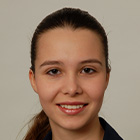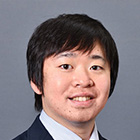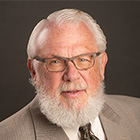Abstract
Interconnectivity options for injection molding machines, e.g., communication interfaces such as
OPC-UA, allow machine and process variables to be recorded in high resolution. This data can be used
to improve quality monitoring, which may contribute to cost reductions by minimizing production waste
or increasing the use of recycled material. Currently, for example, only small amounts of production
waste can be recycled back into the process because the component quality otherwise shows a high
fluctuation due to changes in material properties. Automated quality control and adjustment of the
process parameters can counteract these fluctuations and thus enable a higher proportion of recyclate
to be used in production. In addition to the resulting savings, production costs can also be reduced
by increasing product quality. This reduces the rate of production waste, for example, which
contributes significantly to more economical and sustainable production. For these reasons, control of
the quality properties of the manufactured components has been sought in injection molding for
decades. However, the control of component properties requires their direct measurement within the
production cycle, which is often not possible, very cost-intensive and/or cannot be carried out
non-destructively. For this reason, it is common practice to control machine or process variables that
correlate with component quality instead. However, the injection molding process is affected by
numerous non-measurable disturbance variables which influence the transmission behavior of the
machine, so that identical process parameters do not result in identical process variable curves and
finally do not result in identical component quality. Thus, it is necessary to develop an assistance
system based on a digital twin of the injection molding process, which supports the machine operator
in setting the process parameters of the injection molding machine in such a way that a desired part
quality results. As part of this study, a digital twin of a real injection molding process was
developed on an Arburg injection molding machine (Allrounder 470S, ARBURG GmbH + Co KG, Lossburg,
Germany). Essentially, the work involved the following steps: Setting up a quality measuring cell that
records the relevant component qualities, developing a software module that records all relevant
machine and process variables cycle-related as single values and trajectories, and modeling the
digital twin that predicts the resulting component quality on the basis of the recorded variables. A
laboratory scale and a digital measuring projector were used to determine the quality characteristics,
so that the component weight and dimensional accuracies, e.g., diameter and width, were measured from
the injection-molded tamper-evident closure after each cycle and assigned to the recorded machine and
process variables of the corresponding cycle. The machine and process variables were retrieved via the
OPC-UA interface of the injection molding machine. Process variable trajectories, such as cavity
pressure, cavity temperature, injection pressure and injection speed curves, must be recorded in high
resolution for reliable modeling due to the short duration of the injection process. All machine and
process variables as well as the quality variables measured after the cycle are stored in a database
file assigned to the cycle number. With the data retrieved from a design of experiment divided into
training and test data, different static and dynamic model structures were tested according to their
best fit rates (BFR). The different modelling approaches can be divided into three categories:
1)Setpoint model: The machine setpoints are mapped directly to the resulting part quality. A
Polynomial Regression (PR) model and a Multilayer Perceptron (MLP) were employed.
2)Measurement-features model: The final part quality is predicted from the machine setpoints and from
features extracted from process measurements based on expert knowledge, i.e., maximum cavity pressure
and temperature, or temperature in the cavity at the beginning of the injection phase. As for the
setpoint models a PR model and a MLP were employed. 3)Internal dynamics model: A modern type of
Recurrent Neural Networks (RNN), a Gated Recurrent Unit (GRU) is used to predict batch-end product
quality from process value trajectories. The internal state of the GRU is mapped to the output via a
feedforward Neural Network with a nonlinear hidden layer and a linear output layer. Since the
injection molding process is a time-varying process switching between different machine internal
controllers, the model was also divided into the three major phases of the processing cycle
(injection, packing, cooling). Since the third phase maps the internal state to the output, it is
additionally equipped with an MLP. If the BFR of the individual models are compared, it can be seen
that even the simple setpoint models can predict the component quality very well. The 10th degree PR
model, for example, achieves a BFR of 90%. The fact that the models which predict the part quality
only on the basis of the parameters set on the machine achieve very good results in this test series
could be due, among other things, to the fact that all disturbance variables affecting the process
were excluded or kept constant as far as possible during the test. For the models that take into
account features calculated from the trajectories in addition to the setpoints, the MLP with ten
neurons in the hidden layer achieved the highest BFR of 93%. Compared to these two static model
approaches, the dynamic GRU achieves only marginally better BFR. On the one hand, it is astonishing
that these models can predict the part quality so well based on the raw data without any prior
knowledge from experts; on the other hand, the high computational effort for the formation of a
digital twin, especially for short cycle times, cannot be justified. For the actual digital twin,
static model approaches were therefore used whose computing times are significantly shorter. While the
pre-trained twin receives the new machine and process data after each cycle in live operation of the
injection molding machine and predicts the component quality from this, it then compares this
prediction with the measured quality variables and re-trains itself based on the error. In this way,
it learns to describe the process even better over time. Using backpropagation, the digital twin can
also calculate the optimum machine settings for a desired target variable of the quality
characteristics.
About the Presenter
Marco Klute studied mechanical engineering with specialization in plastics engineering at the
University of Kassel/ Germany. His master thesis focused on two-component injection molding of
polyamide and liquid silicone rubber (LSR) using different surface treatments. Since 2017 he has been
working as a research fellow at the Institute for Material Engineering - Polymer Engineering at the
University of Kassel, in the field of natural based composites as well as simulation and machine
learning. He is currently working on two-component injection molding of bio-based polymers regarding
material development and analytics of adhesion characteristics as well as the digitalization of
injection molding processes using digital twins (supervisor Prof. Dr.-Ing. Heim).








































































































































































.jpg)
.jpg)
.jpg)

.jpg)
